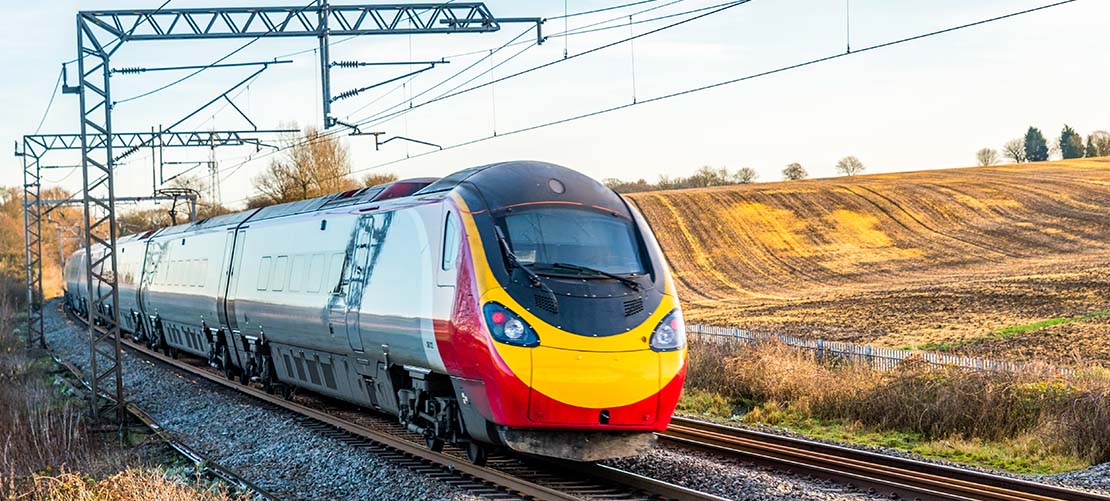Williams-Shapps: delivering the future railway - Rebuilding passenger confidence – what is the offering?

This article is the second in a series of five articles by the Stephenson Harwood rail team looking at the Williams-Shapps Plan for the rail industry and what implementation of that plan could look like.
As we mentioned in the first piece in this series of articles from the Stephenson Harwood Rail team on delivering the Williams-Shapps Plan for Rail (the Williams-Shapps Plan), structural reform of the industry is at the heart of the Williams-Shapps Plan. The new "Great British Railways" ("GBR") is intended to become one point of accountability for the industry, with responsibilities that are currently undertaken by numerous different bodies. We wrote about how some of the reform proposed in the Williams-Shapps Plan has been called for in numerous reviews of the industry over the years and considered how changing ingrained behaviours of those numerous bodies will be an integral part of delivering the Williams-Shapps Plan.
Changing behaviours is a theme which is at the heart of the Williams-Shapps Plan. Not only will it be highly relevant as GBR is created as a key part of the proposed reforms, it is something GBR itself will need to have at the forefront of its mind as it considers delivery of the future railway for passengers. As readers will be aware, amongst the Williams-Shapps Plan's proposals is a focus is on a "new deal for passengers" – setting out measures the government aims to take in order to rebuild passenger confidence in the railway. The Williams-Shapps Plan considers improvements that the rail sector can deliver in the near term to begin "the critical task of rebuilding public trust in rail" and setting the rail sector on the right track towards a customer-focused future.
But what exactly is the Williams-Shapps Plan offering customers in this sphere? How can the industry adapt to offer this new deal? And how can the rail sector be directed onto that new right track?
Some initial thoughts
Our view is that there are a number of steps which need to be taken to work out what that right track is:
-Understand what passengers want. There are at least three categories of passenger needs:
- Fundamentals: applicable to every railway service such as safety and accessibility.
- Operator-specific: commuter passengers have different needs to long distance travellers. When it comes to "service quality", some passengers will care more about a functioning shelter and an on-station coffee shop than they will about vegetation, graffiti or litter. There is no "one size fits all" solution and the outcomes operators are incentivised to deliver will need to be tailored for each operation.
- Local: there will be local considerations as well – busy stations with high commuter flows may need additional or more regular services at peak times – whenever those might be post-pandemic – to accommodate those flows and passenger demand, so that passengers can get a seat. The interests of local authorities may also lead to other behaviours being incentivised.
-Make sure the contracts actually drive delivery of those passenger needs. Some passenger needs won't be captured by drafting. Cheap fares could driver higher passenger satisfaction – but if GBR is in charge of setting those fares, then is it right to incentivise by reference to overall passenger satisfaction? Careful thinking is needed to ensure that the incentive regime really is about driving the right behaviours to deliver outcomes consistent with passenger needs. Of course, there is also some connectivity between passenger needs, which should be factored in when creating the incentive regime.
-Make sure operators are properly incentivised. That doesn't just mean penalising them when things go wrong but incentivising them to act in a particular way and allowing some flexibility when circumstances require. It could involve sharing revenue when the operator has implemented an initiative to drive revenue up and has overperformed.
In this piece we consider what the Williams-Shapps Plan is offering customers to drive up customer satisfaction and measures the industry will be expected to take going forward.
What do passengers want?
The Williams-Shapps Plan considers the Transport Focus 'Rail passengers' priorities for improvement' report from July 2020, which asked over 14,300 passengers across the country to rank a series of 30 possible rail service improvements in order of priority. Taking into account the market research, the Williams-Shapps Plan then identifies nine key areas of passenger needs:
- Safety: the need to be and feel safe.
- Accessibility: the ability for everyone – irrespective of their needs – to access the network as easily as possible and for rail to be an inclusive service.
- Reliability: the need for rail services to be reliable, punctual and frequent so that passengers can have confidence and trust.
- Connectivity: the need to get to and from rail easily, using a range of transport services from door to destination: multi-modal interconnectivity.
- Affordable: the need to feel that tickets offer value for money based on the journey experience, transparent purchasing process and cost.
- Seamless journeys: a consistent experience across the rail network, with the ability to easily understand the different products on offer.
- Trusted: trust that needs will be met and treatment will be fair, and knowing who to turn to if things going wrong.
- Informed: easy access to relevant, accurate and personalised information before, during and after each journey and especially during disruption.
- Comfort: the need for a pleasant and comfortable journey with products and services that meet needs.
How can contractual performance regimes drive these outcomes?
This series focuses on delivering the Williams-Shapps Plan. As we mentioned in our first piece in the series, there will be a series of steps to take us to the new world. Franchise agreements are a thing of the past, a series of directly-awarded National Rail Contracts ("NRCs") are in progress, with Passenger Service Contracts ("PSCs") being the long term aim, with GBR procuring and then managing those PSCs. Let's not forget that franchise agreements already contained various regimes to incentivise what the Department for Transport ("DfT") considered to be consistent with what passengers want. So this is perhaps an opportunity to better align the theory and the reality.
The Williams-Shapps Plan tells us that PSCs will:
- include incentives on "collaboration and innovation"; and
- encourage operators to work closely with partners, including other train operators, local teams and suppliers such as rolling stock companies to improve services and performance.
Of course, in moving to the NRCs, we are already seeing a move towards incentivising performance, with remuneration balanced much more heavily in favour of a performance based, rather than fixed, fee. Questions, as the PSCs are developed, include "what does successful collaboration look like?", "are expectations different depending on the size of the operator?" and "does working closely with partners mean not always acting in your own commercial interests – and if that means less revenue generated, is that an accepted consequence?". These are difficult questions to answer and will depend upon what GBR's objectives are – but they are vital questions to answer as only then can the incentive arrangements be properly articulated.
Pausing briefly, we note the intention is that the PSCs will be competed, so as part of that competition we will no doubt see what the market expects to receive in terms of remuneration for performing what could be quite an onerous contract. In order to attract – or retain – competitors in the market, the balance between any fixed and performance-based fee is likely to have to be carefully considered. Operators will need to feel adequately compensated for carrying out the base requirements – often to a challengingly high standard – as well as being appropriately incentivised to drive improvements in service through performance-based fees.
GBR has a tough job ahead of it on this front, because it will no doubt prove difficult to balance all of the competing demands, such as passenger satisfaction, service enhancements, punctuality and infrastructure. Some of these will only be deliverable if GBR is able to properly fund the operator. Put simply, sometimes passenger satisfaction is driven by investment – and if that investment isn't available from GBR, then passengers may not be satisfied and that should not necessarily be an operator risk. A "one size fits all" performance based incentive scheme is unlikely to be appropriate across every PSC – it really will need tailoring to the operation in question, what passengers using those services want and how much GBR can invest.
Striking the balance between the carrot and the stick.
Overall customer satisfaction has historically been low for rail services. Some of that may be to do with people not being keen on paying large sums to get to their workplaces and only noticing when they're late for work or getting home. The fact remains though that in order to regain customer confidence, there is a need to offer value for money to the farepayer. Using contractual performance regimes aligned to customer satisfaction solely as a stick to penalise operators may not be answer in driving operator-led change to the industry as a whole.
The Williams-Shapps Plan also discusses moving away from a "blame culture" – which ultimately leads to operators and Network Rail pointing fingers Spiderman-meme style, as to who is responsible for delay. Historically, margins for operators under operating contracts have been tight. This inevitably encourages a contentious environment where parties seek to gain advantage by picking fights with other parts of the industry. Moving away from that "blame culture" will also need to extend to GBR as it manages the new PSCs in life. In many respects the aforementioned stick is a way of blaming the operator and so a more collaborative approach to contract management behaviours is likely to be essential for the right cross-industry behaviours to be encouraged. If GBR continues to deploy the stick in managing the PSC, this will only filter down the supply chain and across the industry and ultimately act as a disincentive, so care will need to be taken.
How about some carrot as well, where the operator can share in the successes of the industry which they have driven? Whilst of course there will continue to be discussions on affordability and what constitutes a "reasonable profit", some of that will be driven by competitive forces when the PSC procurement is run. If an operator proactively takes steps over and above ordinary expectations to deliver additional revenue, for example, then it only seems fair that there is some benefit for doing so. Increasing the incentives on an operator to innovate and provide a better service, working across the industry and demonstrating the behaviours the Williams-Shapps Plan is seeking to encourage will be the true way of driving change. We think there needs to be a balance struck between carrot and stick when creating performance regimes, with a real focus given on ensuring the right behaviours and outcomes for the passenger are being encouraged.
The challenge for GBR and the operators will be creating a culture which is aligned and incentivised to achieve high levels of performance: this extends throughout the supply chain from train build and maintenance that will get trains running on time across the network to cleaning and maintenance. An open discussion is needed about the balance between doing what is right for a business and what is right for the industry – and how an operator doing what is right for the industry but to the detriment of its own business can be appropriately compensated.
How can the private sector be incentivised to drive this revolution?
The Williams-Shapps Plan acknowledges that commercial operators are well placed to use their knowledge, experience and skills to identify new opportunities to improve passenger satisfaction, achieve cost efficiencies and offer new services and features. We agree that this has been one of the many benefits of private sector involvement in the railway. Much like Network Rail, GBR will have regional divisions to deliver the railway closer to the end-user, the Williams-Shapps Plan indicating that the regional divisions and local operational teams will be more empowered to make decisions than now. Having regional GBR divisions means that there is opportunity for greater alignment with train operators as close partners of their regional divisions.
This sounds a little like alliancing, as we discussed in the first piece in this series on delivering the Williams-Shapps Plan, and as we mentioned those deeper alliances have not been as successful as first hoped when proposed by McNulty. However, the intention set out in the Williams-Shapps Plan is for GBR to work closely with operators, bringing best practice from international markets and adding value through challenging suppliers and other partners to work together to improve customer service, performance and efficiency. This makes for a great soundbite – and we are sure there must be efficiencies that can be found – but the reality of delivery sounds more complicated. Will there be aligned suppliers between GBR and operators, how is it intended that suppliers will work more closely together and does that have implications for cost and the incentives needed for the supply chain? What will GBR's key objectives be – cross-industry alignment and cost efficiencies?
In general terms there has been a recognition across the industry that to date Network Rail has sometimes been slow to adopt change and consequently the introduction of private investment has not been easy as a result of the slow processes and resistance to change. Indeed the Williams-Shapps Plan indicates that GBR will "clear remit to reform the can’t-do culture and inflated costs that exist across the sector". The Williams-Shapps Plan also speaks of bringing more cross-sector expertise into the new GBR, as well as leveraging the structural changes being implemented by Network Rail since 2018 to make it become more responsive to passenger and freight customers. Given the migration of Network Rail's functions to the new GBR entity, creating a more dynamic culture where the entity makes private investment easier – and finds ways to say yes to innovation – is crucial.
The Williams-Shapps Plan also discusses the need for "modern contracts" to increase competition, reduce costs and help attract private investment for new technologies. Suggestions include:
- Removing complex approval processes and supplier frameworks.
- Introducing new ways of working to improve pace and value for money.
- Adopting international standards to enable integration with global services.
- Adopting simpler procurement processes, open data sharing and use of testing environments to remove barriers to investment and innovation and enable more effective testing of emerging technology.
- Use of drone technology to monitor track conditions and spotting emerging problems (requiring fewer workers to access tracks).
All of these are laudable intentions, although we note that the Emergency Recovery Measures Agreements – which are publicly available – actually imposed much more complex and lengthy procurement procedures on operators when they procure services than had previously been the case. This is an area which will need to be seriously considered in the move to PSCs – we agree that exploring the options and getting good value for money is essential, but complex procurements can often drive up prices and as such not always delivering the best outcome.
Stability and certainty is crucial for private sector investment decisions. The private sector needs to know what it will be investing in at the time of investment but also in the future – this can be over a 30 year period for large investments. Certainty in the industry is therefore crucial.
What about ticketing?
Getting the ticketing and fares system right is clearly an area which will help rebuild passenger confidence – and the industry is almost unanimous in the need to reform the ticketing and settlement system. At the same time, with the taxpayer having supported the industry throughout the pandemic, the Treasury is likely to be supportive of change only if it delivers revenue in the longer term. The foreword of the Williams-Shapps Plan sets out the assumption that "Much of the old demand will return." – is that really the right assumption to draw?
Going forward, GBR will be responsible for preparing the timetables and setting most of the fares. In delivering the Williams-Shapps Plan, a number of overarching principles the fares system are identified including:
- The public want reliable, punctual services that represent good value for money.
- They expect clear and proactive information and simple, fair, transparent pricing.
- Customers with both visible and invisible disabilities and other additional needs must feel welcomed, comfortable and valued when using the rail network.
- The government’s aim is to make travelling by rail a modern, convenient and accessible experience for passengers.
- Railways should be seamlessly connected with other transport services, with more fully accessible trains and stations, straightforward compensation and an end to queues to pay for travel.
The proposed reform of the fares regime will need to meet each of these expectations. It is well-acknowledged that the current pan-industry Ticketing and Settlement Agreement (TSA) stifles innovation and sometimes even prevents operators from doing the right thing for passengers and the railway as a whole, which perversely reduces revenue opportunities. Even for those in the industry who use the document constantly, it is very difficult to understand, and in consequence its application often differs from the words on the page.
In order to implement the Williams-Shapps Plan, the TSA is likely to need a complete overhaul, to bring to fruition the Williams-Shapps Plan's promised modern, transparent, and flexible fares regime. For example, the current revenue allocation process under the TSA is well-understood but complex. A Lead Operator for each point to point Flow is responsible for setting fares, with fares revenue allocated between operators on Flows. This gives rise to opportunities for "raids" and for the revenue allocation system to be gamed through changing service stopping patterns. There are also many various ticket types which exist and can be created which serves to increase the complexity of the system. It remains to be seen how the DfT and GBR intend to change the fares-setting and retailing arrangements, although no doubt they will have an eye to fixing these recurring problems.
Ultimately, passengers deserve to have confidence in their fares system, and to know that the ticket they purchase is the best available option for them. Having GBR manage the TSA, rather than the RDG, may lead to efficiencies, as well as allowing GBR to drive continuous improvement and innovation in fares and ticketing.
The new fares regime will, of course, need to comply with a range of accessibility laws including retained Regulation 1371 on rail passengers' rights and obligations and the Equality Act, in respect of:
- the terms governing travel;
- information provided to passengers;
- the availability of tickets;
- what happens when there is a delay (and any compensation or refund to which the passenger is entitled); and
- particular provisions relevant for disabled passengers.
Conclusion
The Williams-Shapps Plan promises a lot to help rebuild passenger confidence. Delivery will be more challenging – there is a lot to do and many considerations to carefully balance to ensure the right proposition for all is created. We would strongly encourage a focus on behaviours – what does the industry want to incentivise and what regimes can be implemented to deliver that? It will also be important to remember that different operations will need different behaviours encouraged and incentivised – it will be important not simply to roll out a precedent across every operation. For potential operators, it will be key to work with GBR as the PSC is developed to ensure it strikes the right balance between carrot and stick and is a proposition that will be appealing to the market.
The DfT and GBR will need to meet the dual mandates of the Williams-Shapps Plan, of delivering modern, technological solutions, without compromising on the principle that the railways must deliver a comfortable and accessible service for everyone.




